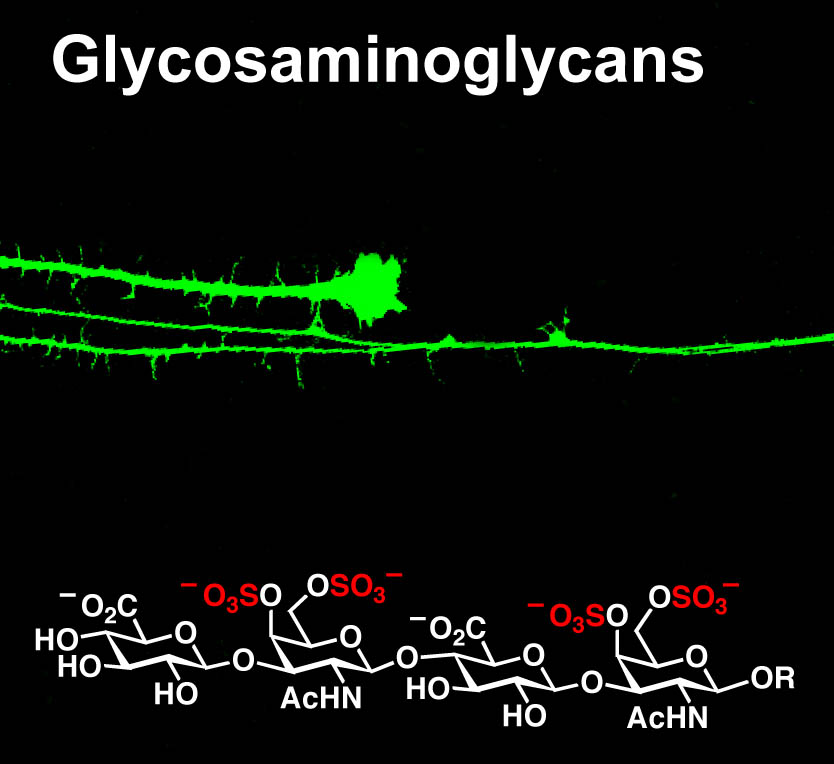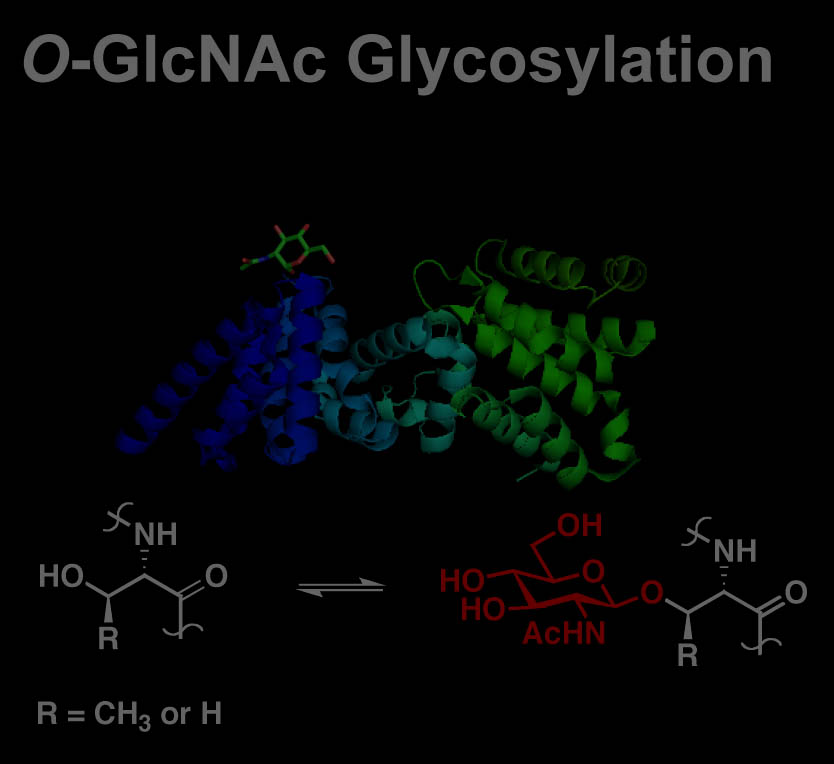RESEARCH
Glycosaminoglycans
Glycosaminoglycans (GAGs) are a family of sulfated oligosaccharides involved in brain development, cancer, inflammation and spinal cord injury. Our research combines organic synthesis and neuro-biology to explore the role of chondroitin sulfate (CS) and heparan sulfate (HS), the most common GAGs in the brain. CS and HS chains are heterogeneously sulfated in vivo, which has complicated efforts to study the biological functions of specific sulfation motifs. To solve this problem, we are developing synthetic methods to access chemically well-defined structures. We then apply our molecules, in combination with the tools of biochemistry, molecular biology, and neurobiology, to understand how specific sulfation motifs contribute to neuronal function and dysfunction. For instance, we have identified particular sulfation motifs that modulate the growth and regeneration of neurons during development and after spinal cord injury. These studies may reveal novel therapeutic strategies for stimulating neuronal growth and repair for the treatment of neuronal injuries or neurodegenerative diseases.
In addition, we are studying how the macromolecular structure of glycosaminoglycans influences their biological activity through the design of novel CS and HS mimetics. Toward this end, we are developing glycopolymers that are more readily synthesized than polysaccharides and have tunable chemical and biological properties. The interactions of these glycosaminoglycan mimetics with proteins are being analyzed to determine the role of specific sulfation patterns and molecular architecture in regulating important biological processes, such as axon guidance, growth factor signaling, inflammation and blood coagulation.




